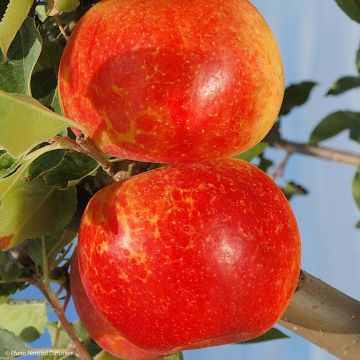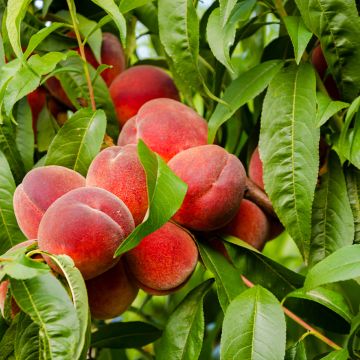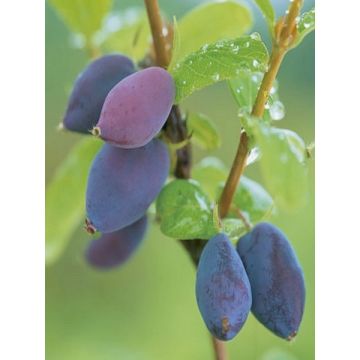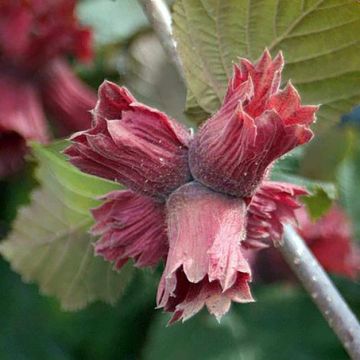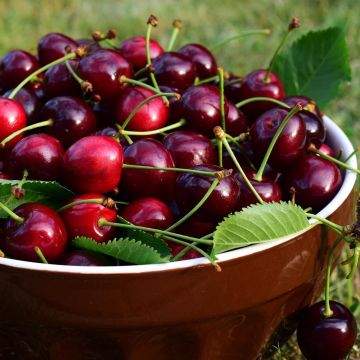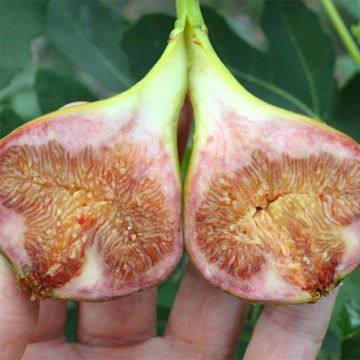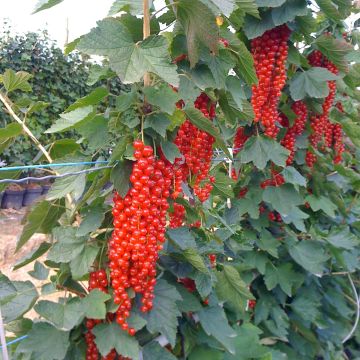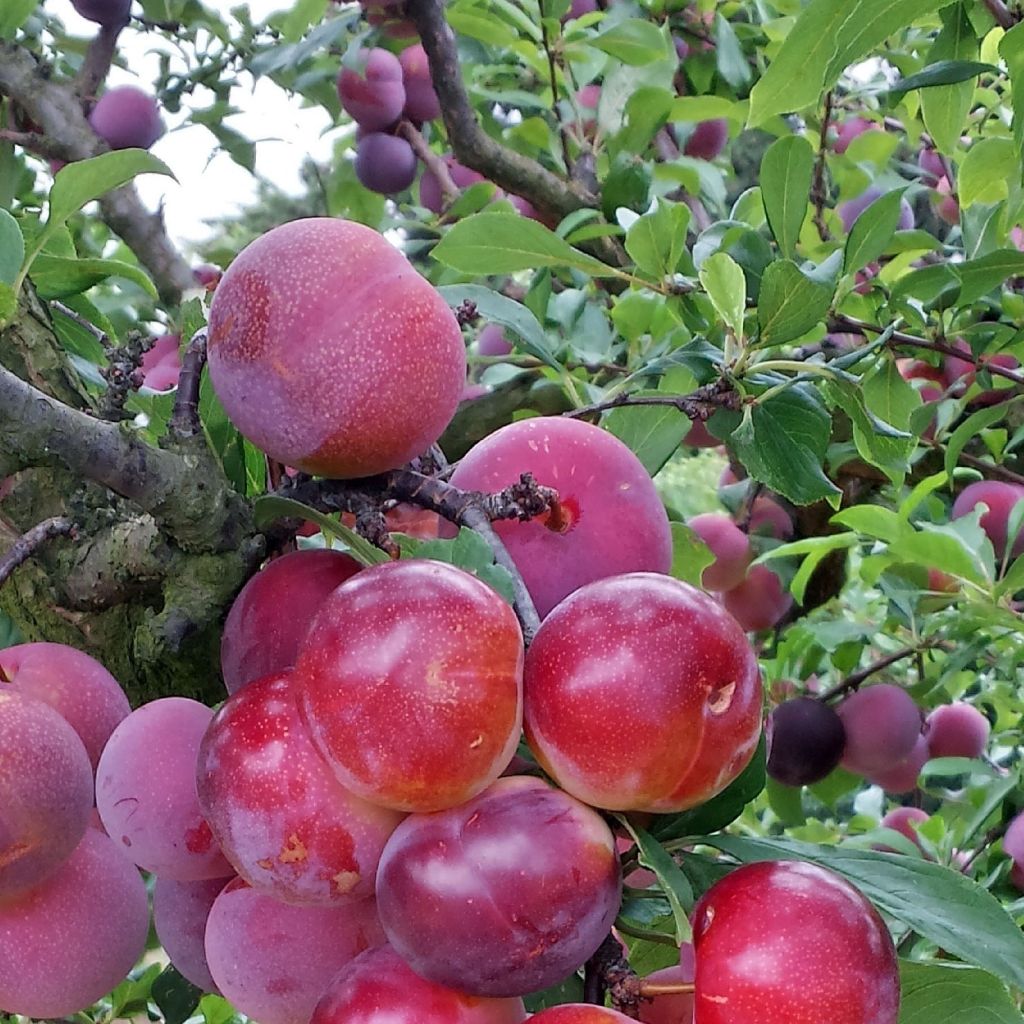

Pluot Pink Candy - Plumcot
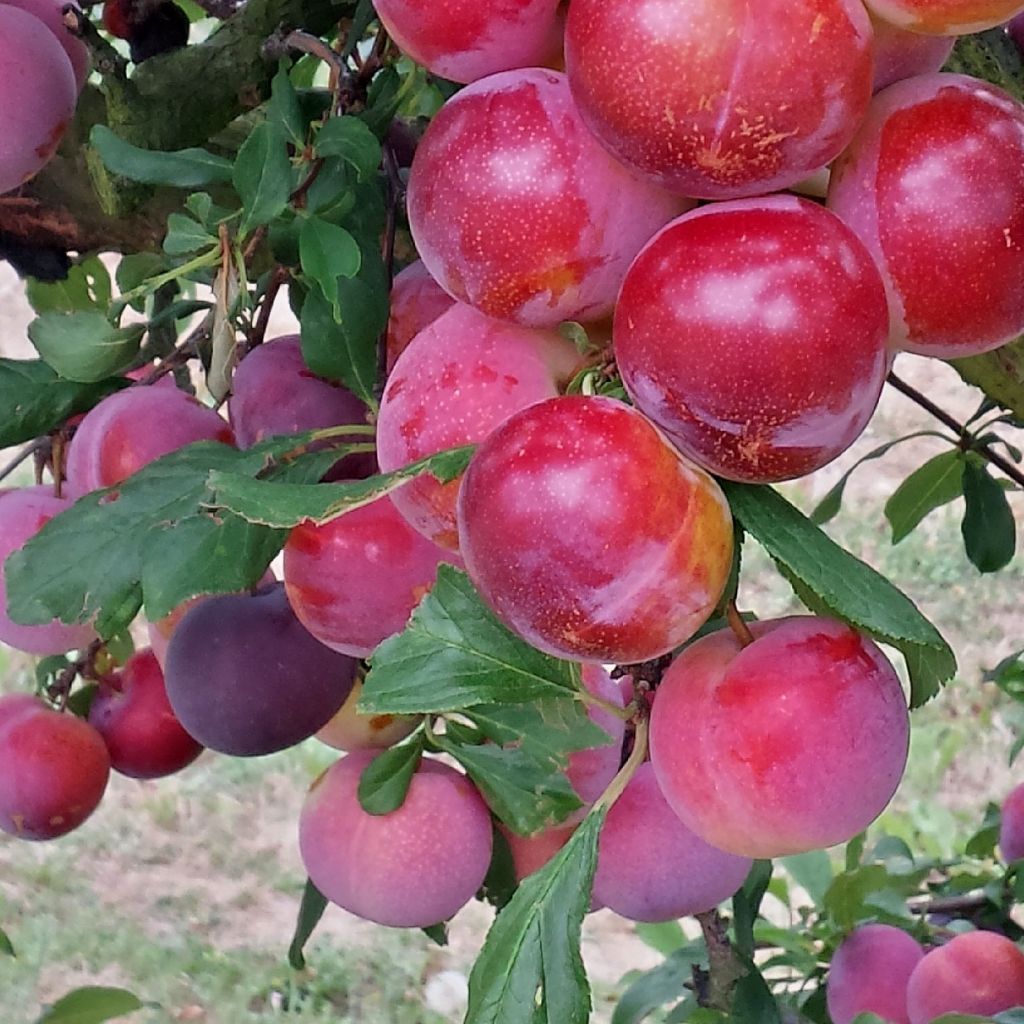

Pluot Pink Candy - Plumcot
Pluot Pink Candy - Plumcot
Prunus Pluot® Pink Candy®
Plumcot
This item cannot be shipped to the selected country
Oversize package delivery charge from €6.90
Oversize package delivery charge from €6.90
Delivery to Corse prohibited
More information
Schedule delivery date,
and select date in basket
This plant carries a 6 months recovery warranty
More information
We guarantee the quality of our plants for a full growing cycle, and will replace at our expense any plant that fails to recover under normal climatic and planting conditions.
Oversize package: home delivery by special carrier from €6.90 per order..
Express home delivery from €8.90.
Oversize package: home delivery by special carrier from €6.90 per order..
Express home delivery from €8.90.
Delivery to Corse prohibited: UE law prohibits the import of this plant from mainland France to Corse as part of the fight against Xylella fastidiosa. Please accept our sincere apologies.
More information

Description
The Pluot Pink Candy is a clever blend of a plum and an apricot. This self-fertile and productive variety produces fruits of about 6 cm (2in) in diameter, which take after the plum for their smooth skin and juicy flesh, and the apricot for the taste and sweetness. Their skin is pink, hence the name, slightly pruinose, and the flesh is pink-red, very sweet, with hints of exotic fruits in its fragrance. Harvest takes place at the end of August.
The Pluot is an interspecific species. It is a complex hybrid between a plum and an apricot, created by Floyd Zaiger in 1988 in the United States. It contains 70% of the plum genome and 30% of the apricot tree's genome. Like many fruit trees, the Pluot Pink Candy appreciates light, rich, and deep soils. It does not tolerate excess water or heavy and compact soils well. A sunny location sheltered from the wind will protect the flowering and help with fruiting.
It is a semi-dwarf tree that will reach, at adulthood, a maximum of 3/4 the size of a classic plum tree, about 2.50 m (8ft) in height. Its deciduous foliage is a bright green. Its leaves are long, ovate, measuring 8 to 15 cm (3 to 6in) in length and 3 to 4 cm (1 to 2in) in width, with a short petiole. Its pale pink flowering occurs in April. The flowers are hermaphroditic and self-fertile. The fruiting results in Pluots, the sweetest and most sugary fruits. Their skin is smooth like that of plums. They are the size of a peach and derive their taste from the apricot. The juicy and sweet texture comes from the plum. Their skin is pink, hence the name, slightly pruinose, and their flesh is colored, pink-red, very sweet, with hints of exotic fruits in its fragrance.
The pluot is enjoyed raw at the foot of the tree, in fruit salads, but also in desserts, pastries, as an accompaniment to meats and dishes. It can be transformed into jams, of course, but also preserved in syrup, compotes, juices...
Report an error about the product description
Pluot Pink Candy - Plumcot in pictures
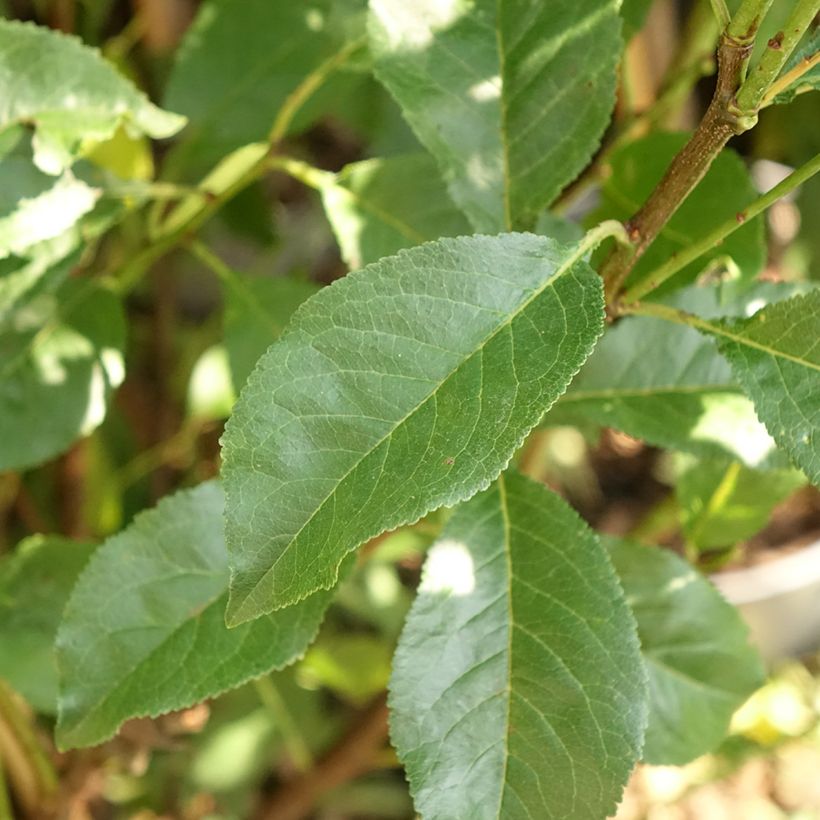

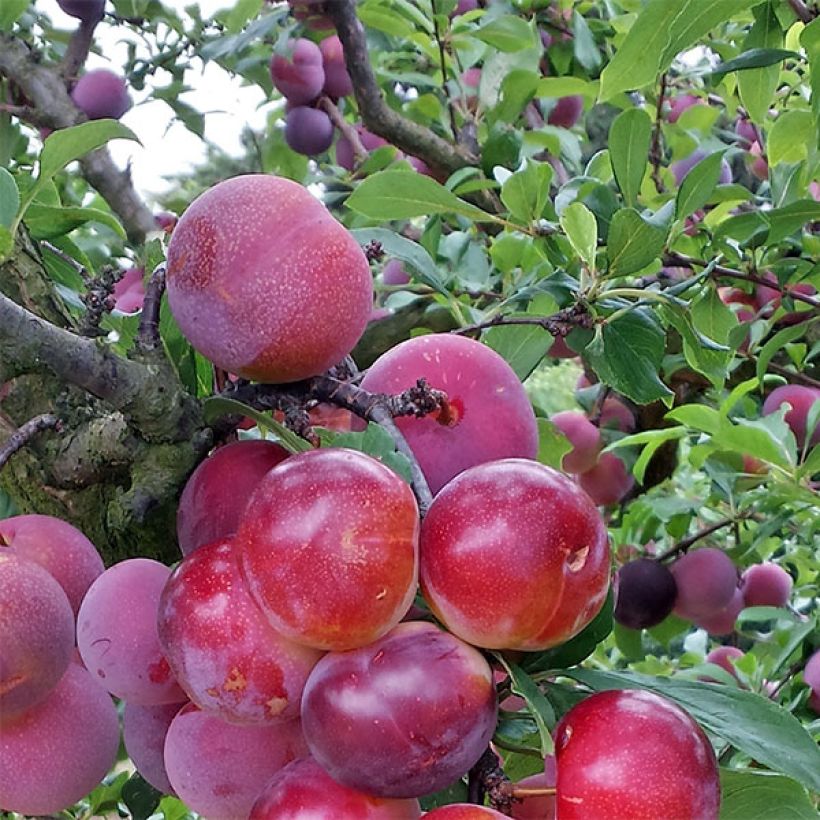

Plant habit
Fruit
Flowering
Foliage
Botanical data
Prunus
Pluot®
Pink Candy®
Rosaceae
Plumcot
Cultivar or hybrid
Other Fruit trees A to Z
Planting and care
Pluot Pink Candy should preferably be planted from October to December. Dig a hole two to three weeks before planting, twice as wide and deep as the pot. On the day of planting, place the plant with its pot in a basin of water, in order to moisten the entire root ball by capillarity. Add compost to the bottom of the hole. Place the plant in the hole, fill with a mixture of soil and compost. Gently tamp around the base of the plant as you fill, ensuring that the roots are in close contact with the soil. The root ball should be completely covered. Water generously.
It will thrive in fairly deep soils. It also prefers a light and well-draining soil.
Planting period
Intended location
Care
-
, onOrder confirmed
Reply from on Promesse de fleurs
Haven't found what you were looking for?
Hardiness is the lowest winter temperature a plant can endure without suffering serious damage or even dying. However, hardiness is affected by location (a sheltered area, such as a patio), protection (winter cover) and soil type (hardiness is improved by well-drained soil).

Photo Sharing Terms & Conditions
In order to encourage gardeners to interact and share their experiences, Promesse de fleurs offers various media enabling content to be uploaded onto its Site - in particular via the ‘Photo sharing’ module.
The User agrees to refrain from:
- Posting any content that is illegal, prejudicial, insulting, racist, inciteful to hatred, revisionist, contrary to public decency, that infringes on privacy or on the privacy rights of third parties, in particular the publicity rights of persons and goods, intellectual property rights, or the right to privacy.
- Submitting content on behalf of a third party;
- Impersonate the identity of a third party and/or publish any personal information about a third party;
In general, the User undertakes to refrain from any unethical behaviour.
All Content (in particular text, comments, files, images, photos, videos, creative works, etc.), which may be subject to property or intellectual property rights, image or other private rights, shall remain the property of the User, subject to the limited rights granted by the terms of the licence granted by Promesse de fleurs as stated below. Users are at liberty to publish or not to publish such Content on the Site, notably via the ‘Photo Sharing’ facility, and accept that this Content shall be made public and freely accessible, notably on the Internet.
Users further acknowledge, undertake to have ,and guarantee that they hold all necessary rights and permissions to publish such material on the Site, in particular with regard to the legislation in force pertaining to any privacy, property, intellectual property, image, or contractual rights, or rights of any other nature. By publishing such Content on the Site, Users acknowledge accepting full liability as publishers of the Content within the meaning of the law, and grant Promesse de fleurs, free of charge, an inclusive, worldwide licence for the said Content for the entire duration of its publication, including all reproduction, representation, up/downloading, displaying, performing, transmission, and storage rights.
Users also grant permission for their name to be linked to the Content and accept that this link may not always be made available.
By engaging in posting material, Users consent to their Content becoming automatically accessible on the Internet, in particular on other sites and/or blogs and/or web pages of the Promesse de fleurs site, including in particular social pages and the Promesse de fleurs catalogue.
Users may secure the removal of entrusted content free of charge by issuing a simple request via our contact form.
The flowering period indicated on our website applies to countries and regions located in USDA zone 8 (France, the United Kingdom, Ireland, the Netherlands, etc.)
It will vary according to where you live:
- In zones 9 to 10 (Italy, Spain, Greece, etc.), flowering will occur about 2 to 4 weeks earlier.
- In zones 6 to 7 (Germany, Poland, Slovenia, and lower mountainous regions), flowering will be delayed by 2 to 3 weeks.
- In zone 5 (Central Europe, Scandinavia), blooming will be delayed by 3 to 5 weeks.
In temperate climates, pruning of spring-flowering shrubs (forsythia, spireas, etc.) should be done just after flowering.
Pruning of summer-flowering shrubs (Indian Lilac, Perovskia, etc.) can be done in winter or spring.
In cold regions as well as with frost-sensitive plants, avoid pruning too early when severe frosts may still occur.
The planting period indicated on our website applies to countries and regions located in USDA zone 8 (France, United Kingdom, Ireland, Netherlands).
It will vary according to where you live:
- In Mediterranean zones (Marseille, Madrid, Milan, etc.), autumn and winter are the best planting periods.
- In continental zones (Strasbourg, Munich, Vienna, etc.), delay planting by 2 to 3 weeks in spring and bring it forward by 2 to 4 weeks in autumn.
- In mountainous regions (the Alps, Pyrenees, Carpathians, etc.), it is best to plant in late spring (May-June) or late summer (August-September).
The harvesting period indicated on our website applies to countries and regions in USDA zone 8 (France, England, Ireland, the Netherlands).
In colder areas (Scandinavia, Poland, Austria...) fruit and vegetable harvests are likely to be delayed by 3-4 weeks.
In warmer areas (Italy, Spain, Greece, etc.), harvesting will probably take place earlier, depending on weather conditions.
The sowing periods indicated on our website apply to countries and regions within USDA Zone 8 (France, UK, Ireland, Netherlands).
In colder areas (Scandinavia, Poland, Austria...), delay any outdoor sowing by 3-4 weeks, or sow under glass.
In warmer climes (Italy, Spain, Greece, etc.), bring outdoor sowing forward by a few weeks.


































